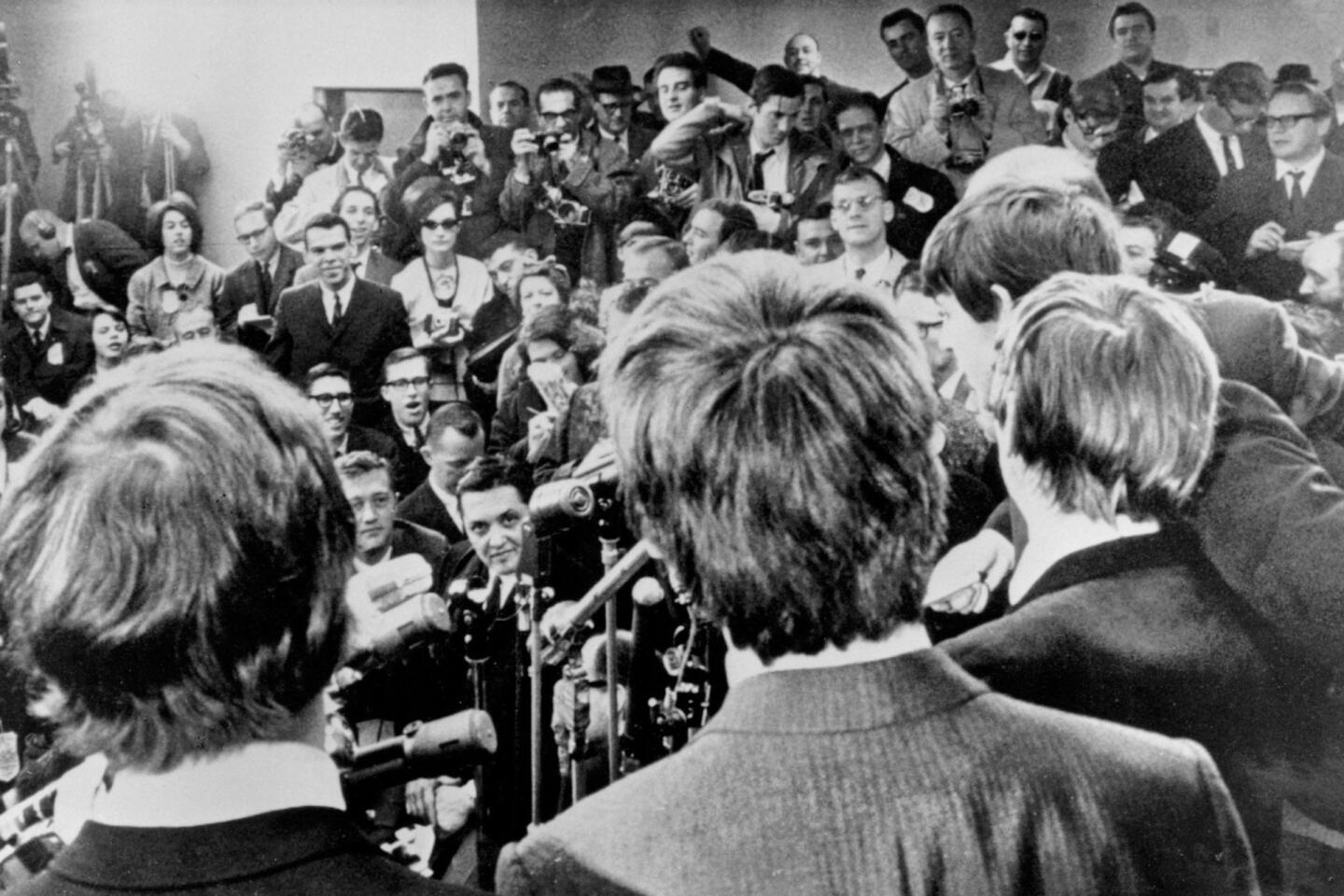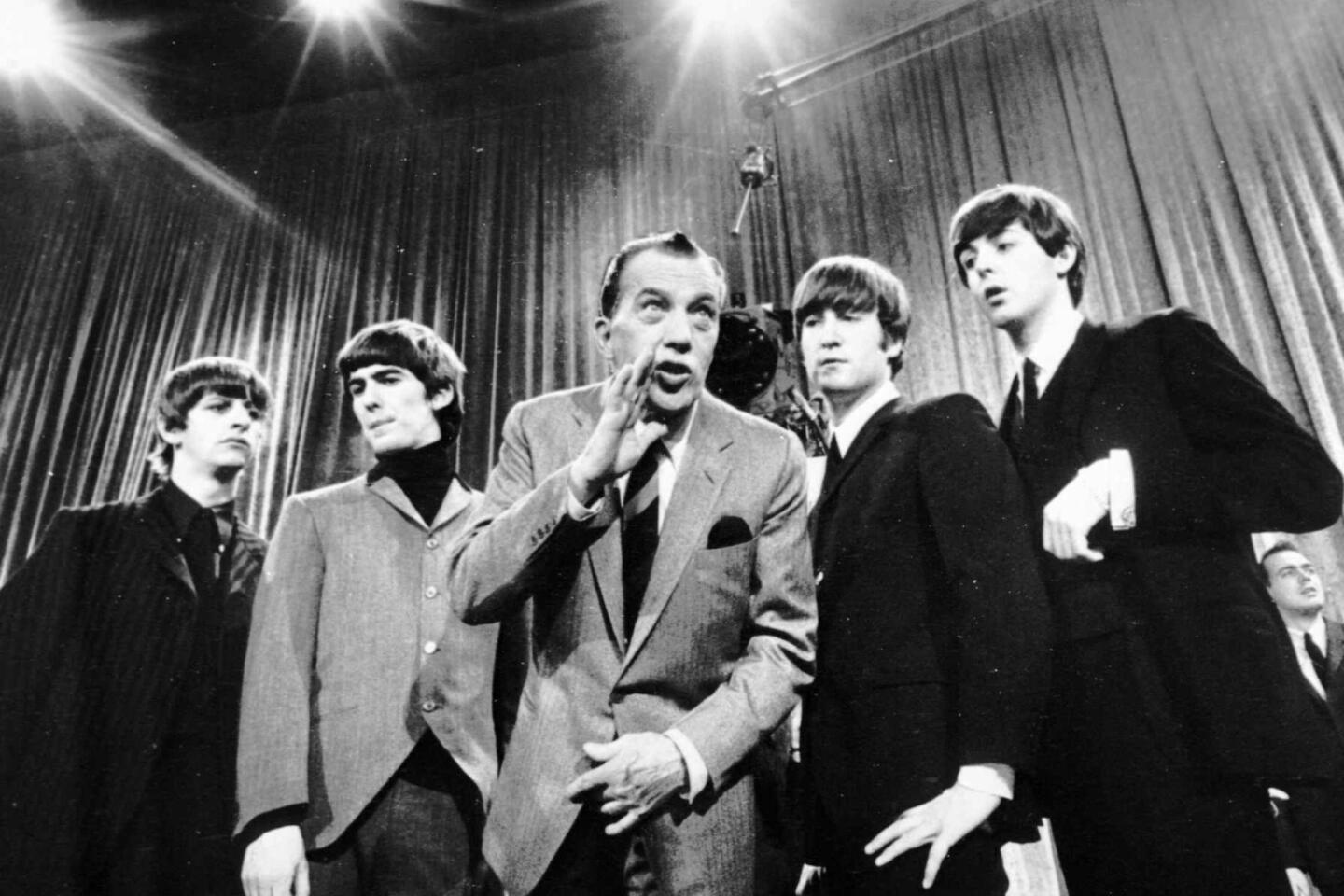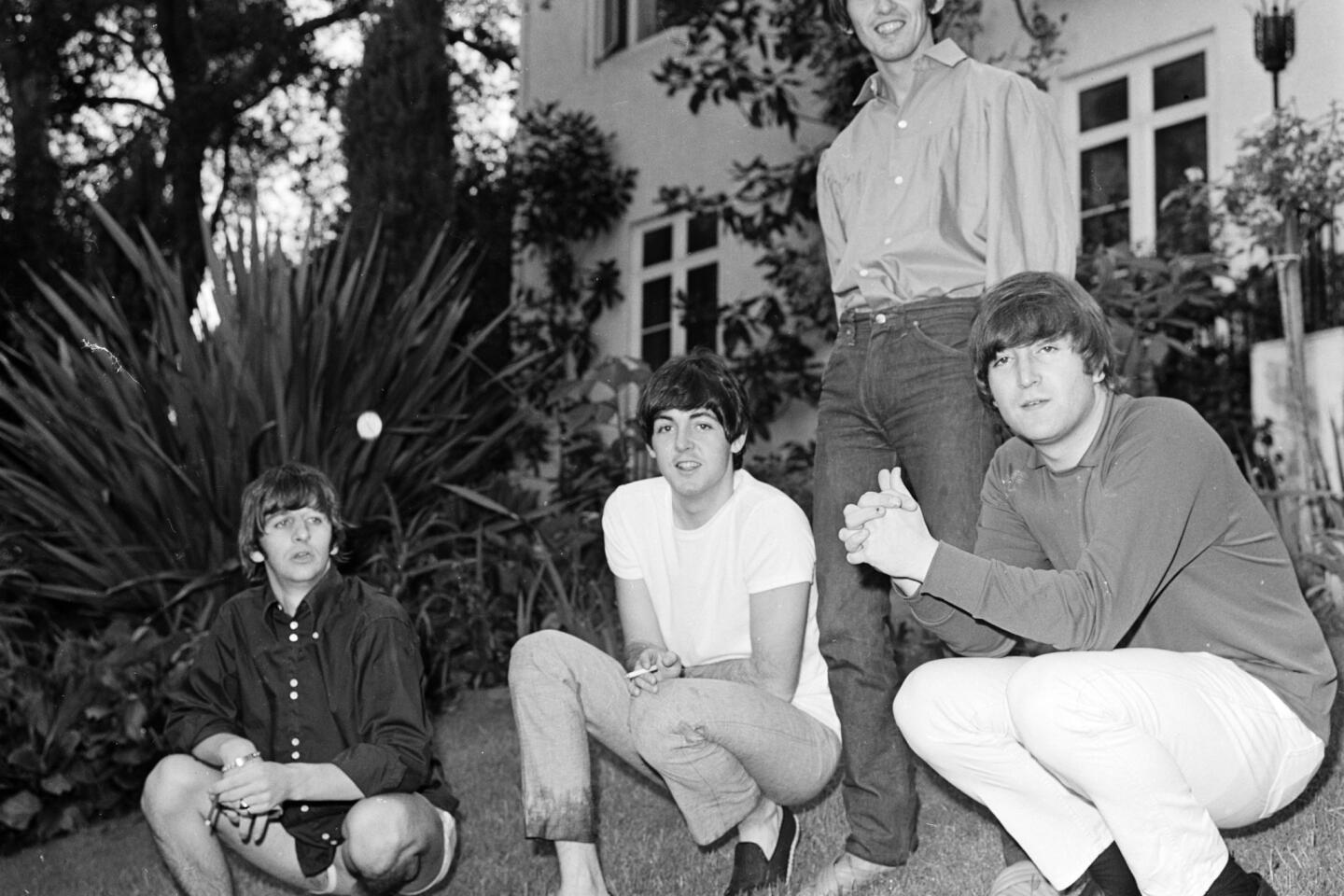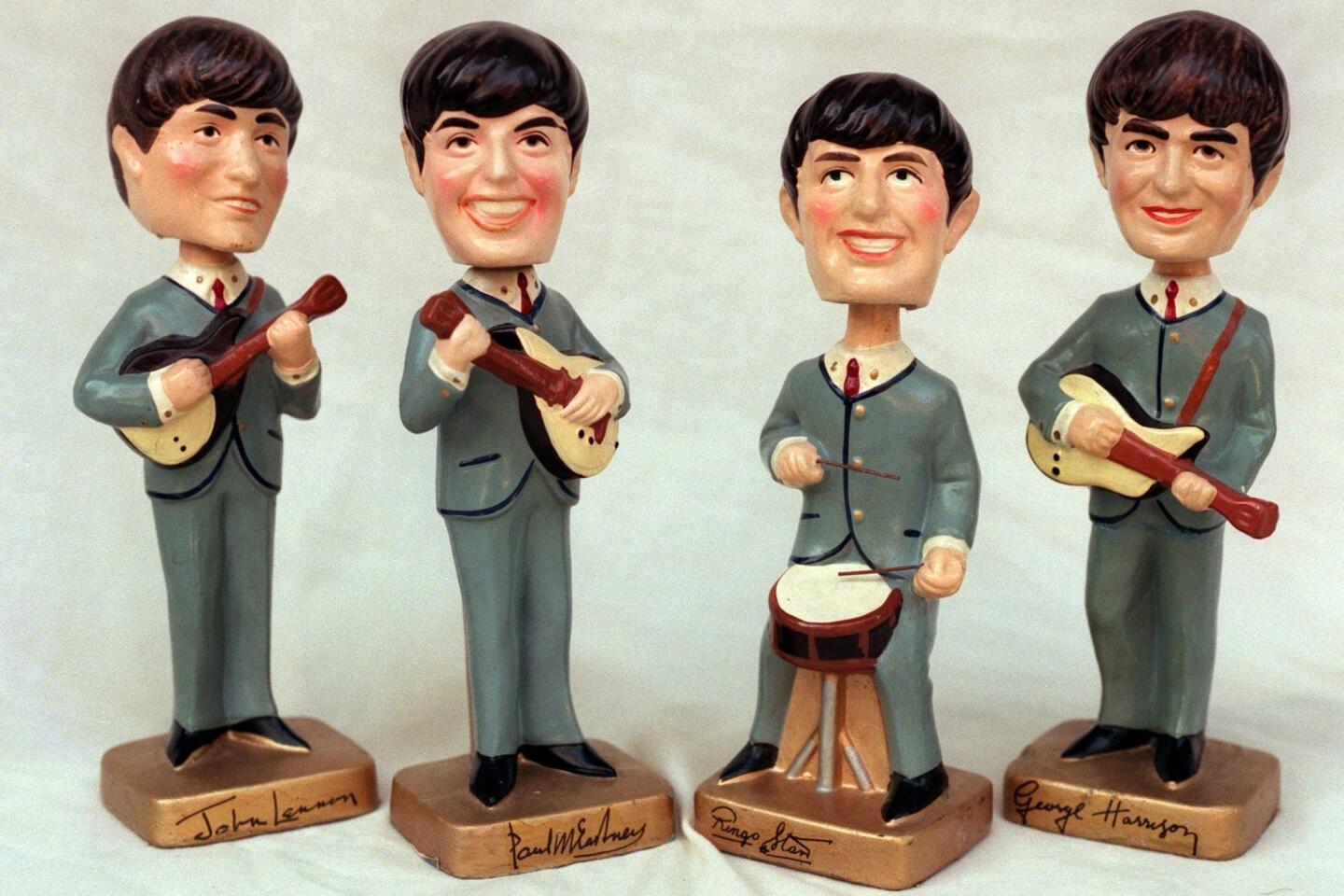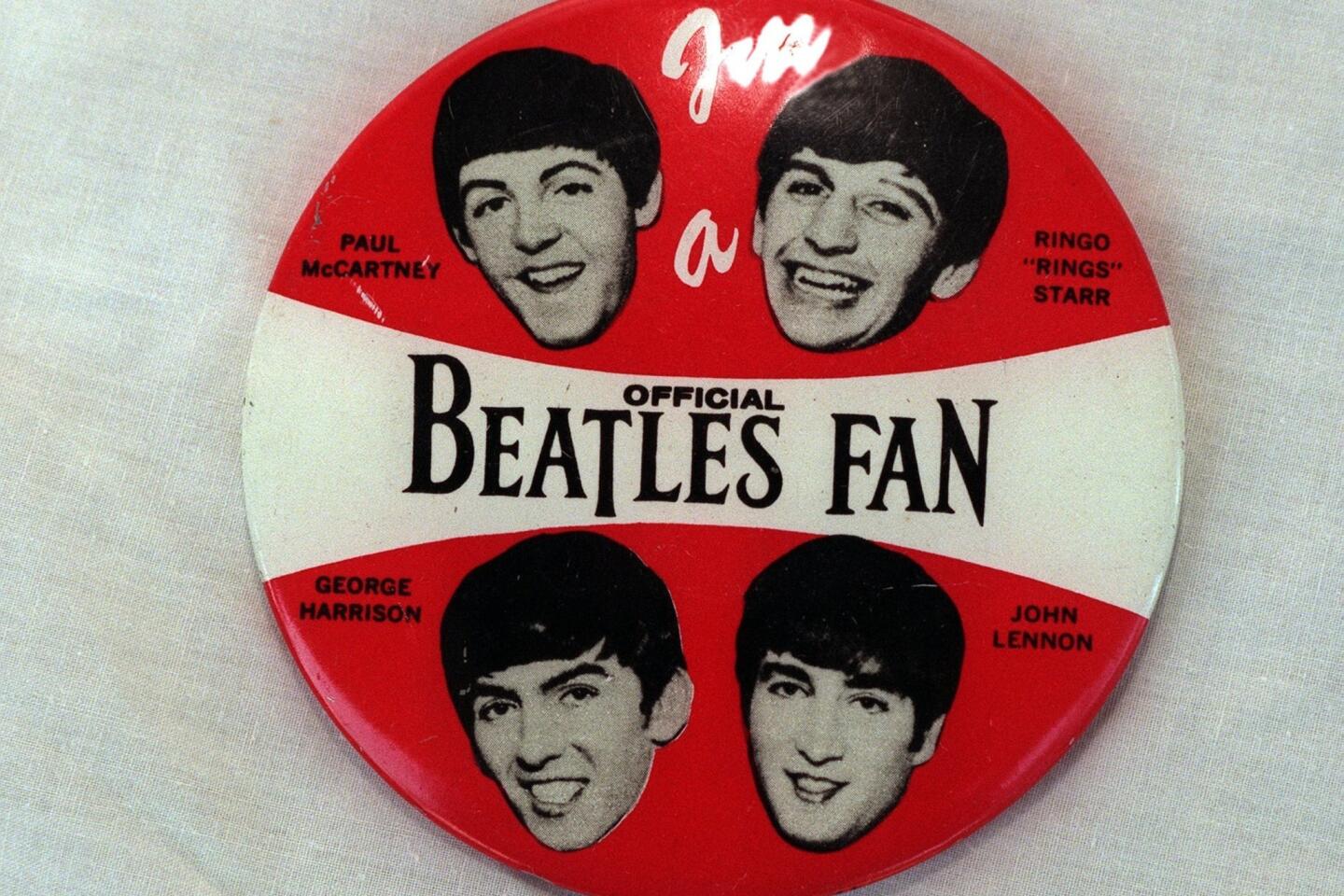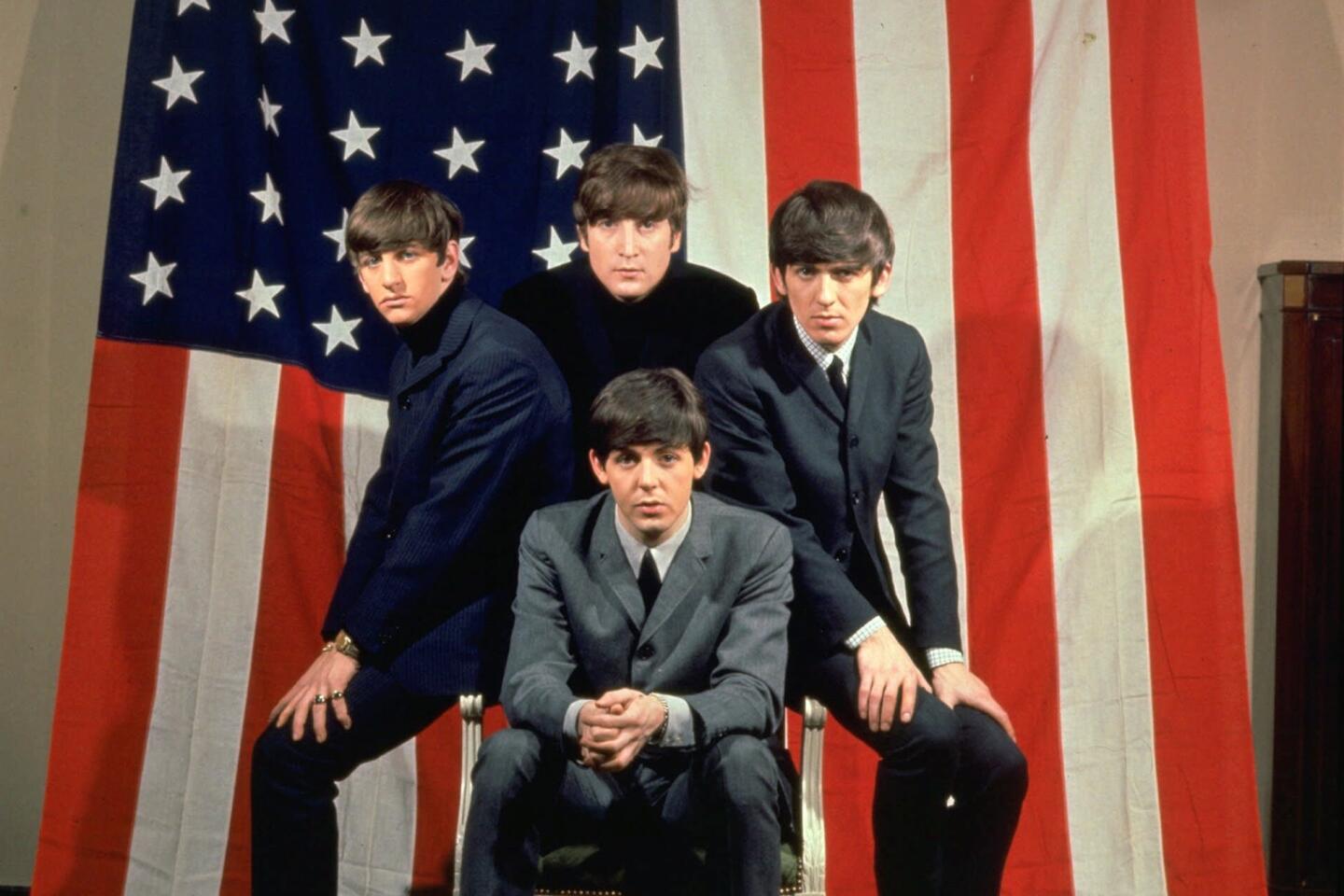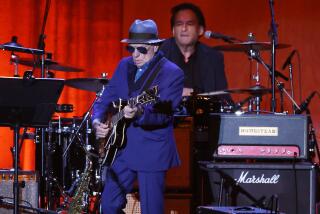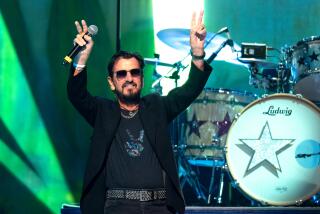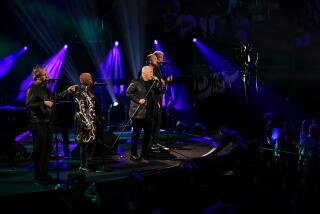The Beatles powered TV, and TV powered the Beatles
Fifty years ago next Sunday, on Feb. 9, 1964, via “The Ed Sullivan Show,” America met the Beatles.
It was not the group’s first appearance on American television. CBS News had reported, dismissively, on British “Beatlemania,” and Jack Paar had aired on his talk show a clip of the band playing in England. Their music was in the charts, finally: After a year of outright refusal, Capitol Records (an American arm of EMI, the Beatles’ British label) was finally releasing and promoting their records. In “I Want to Hold Your Hand,” the band had its first U.S. No. 1 About 3,000 fans greeted the Fab Four at the airport when they arrived in New York two days earlier.
But the Sullivan show was different. The TV version of vaudeville’s “playing the Palace,” it conferred a seal of approval, even of importance, on the acts that appeared there. On the air since the dawn of the medium and watched regularly by many millions, it was a national institution, a family tradition. (“Hymn for a Sunday Evening,” from the 1960 musical “Bye Bye, Birdie,” is a meditation on his very name.)
PHOTOS: The Beatles: A look back at their U.S. debut
The Beatles would have happened here whether they played “The Ed Sullivan Show” or not. Indeed, for many the only reason the show is remembered is that the Beatles were on it, but they might not have happened so explosively, so definitively, so fast. Their first appearance on the show, which they both opened and closed, was estimated to have been seen by a record-breaking 73 million viewers, or one in three Americans, and they appeared the next week as well, remote from Miami Beach, and the week after that, on videotape.
Not everyone who watched was converted, of course. If they were relatively friendly revolutionaries, with their pressed suits and bemused grins and professional politesse and their malt-shop lyrics, they were revolutionaries nonetheless. Their energy was fearsome, their wit sharp and their hair, by local standards, was for some confusingly long.
Now that everything is at our fingertips, a swipe or click away at any moment anywhere, it is hard to conceive of the effect they once had. The revolution had actually been televised then. In a media world that requires a surfeit of “news,” appearances by musicians are still talked about, especially if in some ways outrageous. (What Will Miley Do?) But the world does not change overnight, as it seemed to in February 1964, when, legend has it, legions of kids ran out and bought Rickenbacker guitars and Cuban-heeled boots, grew their hair and started writing songs.
PHOTOS: The Early Beatles Collections
The importance of that moment to the group’s American fortunes was underscored by Capitol using images from the “Sullivan” show on the covers of “The Beatles’ Second Album,” released in April, and “Something New,” which came out in July. But television appearances, from teen-pop shows to Morecambe and Wise’s popular British comedy-variety series, had already played an important part in their career, building them through 1963 into household names in Britain, where they were regarded as lovable lads and invited to play for the queen.
It’s no accident that their first film, “A Hard Day’s Night,” which began shooting soon after the group’s return from the U.S. and is a kind of edited, enhanced version of the life they were living, largely concerns a television appearance. (That film, and its zanier follow-up, “Help!,” also gave birth before long to “The Monkees,” which was both a product of a traditional TV network and a step into the avant-garde: Producer Bert Schneider and Bob Rafelson would, between them, have a hand in “Easy Rider,” “Five Easy Pieces” and the surrealist post-series Monkees movie, “Head,” written by Rafelson and Jack Nicholson.)
After the Beatles quit touring in 1966, television was their main instrument of public appearance. There was “All You Need Is Love,” performed as part of a worldwide satellite telecast in 1967. There were promotional films — precursors to the video clip, and instructions, in a way, on how to read the songs — for the single sides “Rain,” “Strawberry Fields Forever,” “Penny Lane,” “Hey Jude,” “Revolution” and “Let It Be.” They came to New York in 1968 and went on “The Tonight Show” (guest-hosted by Joe Garagiola) to announce the formation of Apple.
“Magical Mystery Tour” was a BBC Christmas special before it became a film in the U.S. Each of these appearances, live or filmed but often shown only once, constituted an unmissable event, made more valuable by the scarcity of such events.
Now an institution
They are, to be sure, an institution now themselves. Though still working, enviably vigorous and recognizably themselves, the surviving Beatles are in their 70s now. One of them lets himself be called “Sir Paul.”
Feb. 9, on the anniversary of the band’s “Ed Sullivan” bow, CBS will air “The Night That Changed America: A Grammy Salute to the Beatles.” Many of the acts had also performed at the Grammy Awards ceremony, which took place the night before the special was recorded, and at which Paul McCartney and Ringo Starr accepted a Lifetime Achievement Award. I was present at the salute, some of which was inspired and some more of which merely proved the excellence of the original versions, though one can say at least that the current program is no less the end than the first was the absolute beginning.
When the Beatles made their “Ed Sullivan” debut, show business, like much else in the world then, was at a point of change, a change the Beatles both reflected and helped bring about. Rock ‘n’ roll had a history with television as had other types of teen pop; Dick Clark had been hosting “American Bandstand” since 1956.
PHOTOS: ‘A Grammy salute to The Beatles’
The Beatles were not the first of their kind to appear on “The Ed Sullivan Show”: Elvis Presley had made his own repeated splashes there, and in one famous instance was shot from the waist up for the benefit of more conservative sensibilities. But the assumption was that they were only fads passing through, something to exploit for a while, who would grow out of their youthful otherness, as Elvis did, or who would simply disappear, leaving the same figures in power and the power structure unaltered.
Self-contained and self-directed — notwithstanding the guidance of manager Brian Epstein and producer George Martin, who were collaborators and not directors — the Beatles were something new and in no hurry to leave or conform. Other new things followed through doors they helped open. For better or worse, for a while, the world grew young.
There has been no “Beatles,” of course, since 1970, when the group broke up, and no possibility of a reunion since 1980, when John Lennon was murdered — and, since the death of George Harrison, no possibility even of the virtual reunion that produced “Free As a Bird” and “Real Love,” Lennon demo tracks finished by his former bandmates on the occasion of their 1995 retrospective “Anthology” project.
360 PHOTO: Paul McCartney gets his star on the Hollywood Walk of Fame
On the other hand, none of that seems to matter much. Beatles music still sells well in all available formats. The music has entered into the ether; it is something we live in; it has achieved something of the quality of folk music, a thing we know from childhood, and our children and their children will know as well. It isn’t nostalgia that colors these songs; they are simply everpresent. Before playing “Hey Bulldog” at the anniversary salute, Dave Grohl paid tribute to the one group that was his mother’s favorite band, his own favorite band and his daughter’s favorite band.
It’s easy to overstate the influence of a pop band on history, and yet it is hard to understate the importance of this one. They weren’t necessarily the best band at all things. But no other group mixed talent and ambition, curiosity and opportunity, elegance and approachability, ease and urgency, to such a degree, or so attractively. As a unit, they contained all the tensions that would ultimately break them apart; but while they held together, the mix was powerful.
Paul and Ringo sang together last week as old bandmates and permanent Beatles. It was lovely and moving. And if it didn’t change the world, well, they had done that already.
More to Read
The complete guide to home viewing
Get Screen Gab for everything about the TV shows and streaming movies everyone’s talking about.
You may occasionally receive promotional content from the Los Angeles Times.
